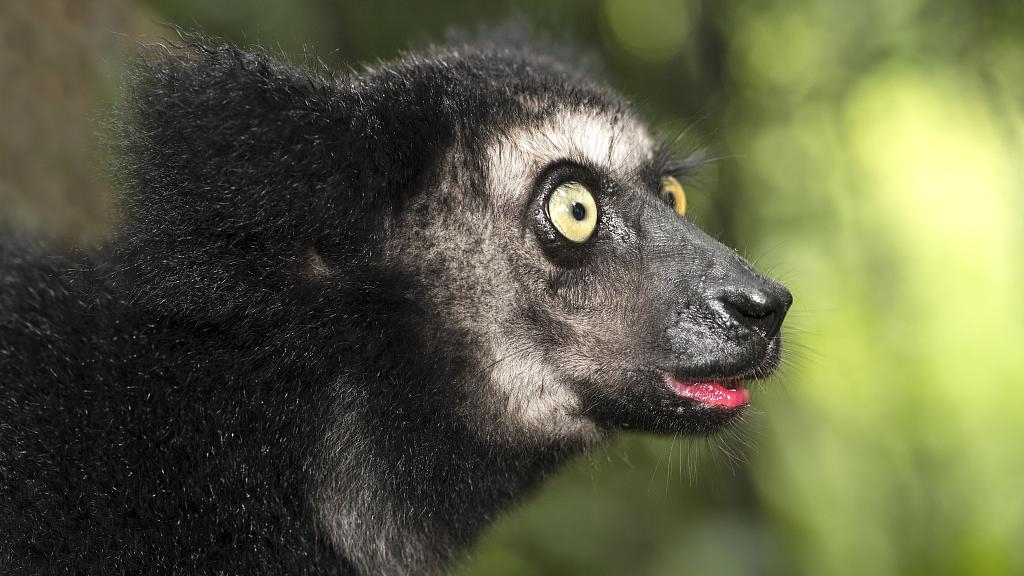When the bright-and-rounded yellow eyes of indri meet the human eyes, it is hard for one not to simmer with laughter. Those are the same eyes as many other lemurs, yet the rounded head and big fluffy ears of indri have contributed even more to that amusing effect.
Indri is the largest species of lemurs, and like all lemurs, it is only found in Madagascar.
In native Malagasy language, the word "indri" means "there it is." According to anecdotes, the French naturalist Pierre Sonnerat, who first described the animal, heard a Malagasy point out the animal and took the word to be its name.
The local people refer to this animal as babakoto, which means "father of a little boy" in Malagasy language.

Indri is regarded as a sacred animal in Madagascar and is believed to be of the same origin as human, therefore it is protected from hunting or other direct human harm. However, the population of indri has shrunk dramatically in the past four decades by 80 percent. The rapid decline in number is mainly due to fragmented habitat caused by agricultural activities, particularly the slash and burn agriculture. The status of indri is now "critically endangered", according to IUCN's Red List of Threatened Species.
The only conservation method is to protect indri's habitat. Because this species is highly selective and cannot cope with any other environment other than its native forest in Madagascar. Captive breeding has not been working in the past due to the same reason. Indris can live up to 18 years in the wild, but very few survive in captive breeding for more than one year.
Primates in jeopardy
As the most common primate on Earth, homo sapiens share the same order with other 512 species across 93 countries. Non-human primates are our closest relatives on this planet. They play a significant role in various types of ecosystems, from the mysterious tropical forests to the grand African savannas, their intelligence is fascinating and sheds light into studies of human society and behaviors.
However, many species of primates are on the brink of extinction. The series "Primates in jeopardy" is based on the list "World's 25 Most Endangered Primates (2018-2020)" co-published by IUCN SSC Primate Specialist Group (PSG), International Primatological Society (IPS), Global Wildlife Conservation (GWC) and Bristol Zoological Society (BZS).
This is the tenth iteration of a biennial listing of a consensus of the 25 primate species considered to be among the most endangered worldwide and the most in need of conservation measures.
(All photos via VCG. Cover image designed by CGTN's Chen Yuyang.)
(If you want to contribute and have specific expertise, please contact us at nature@cgtn.com)